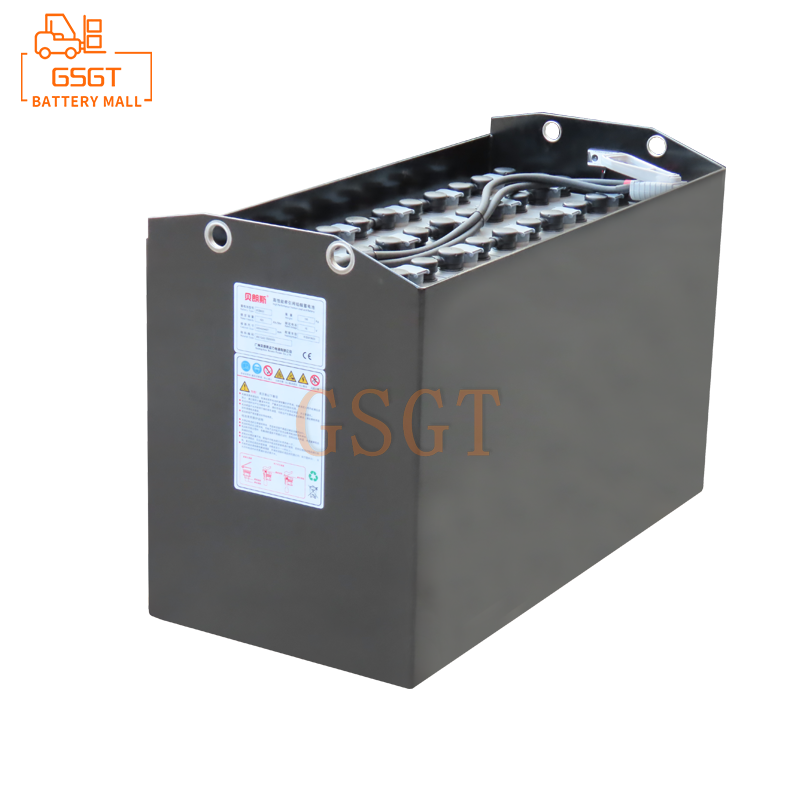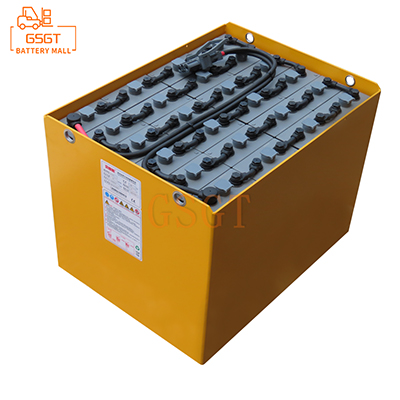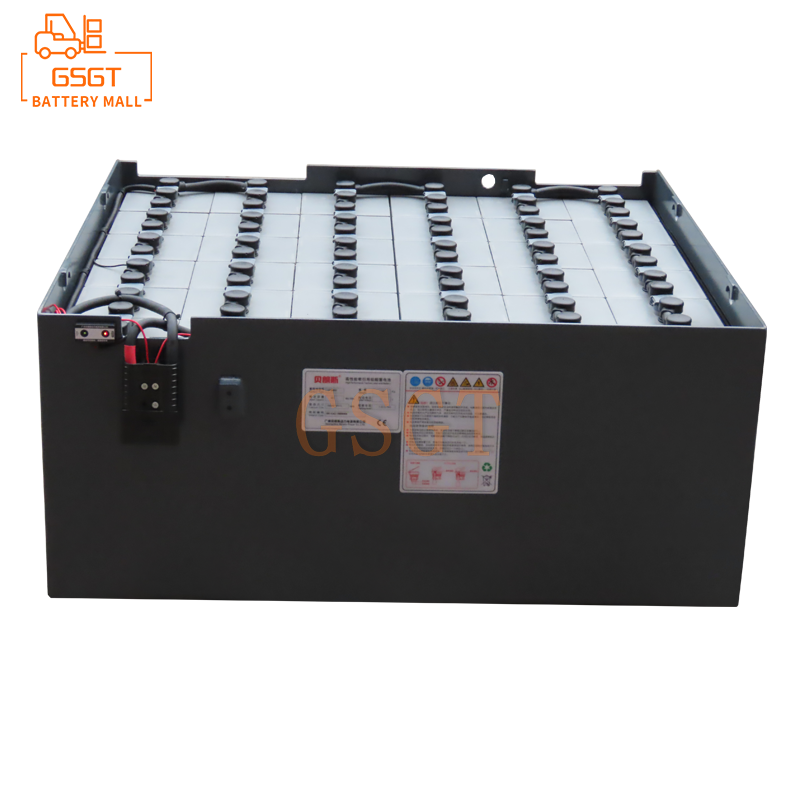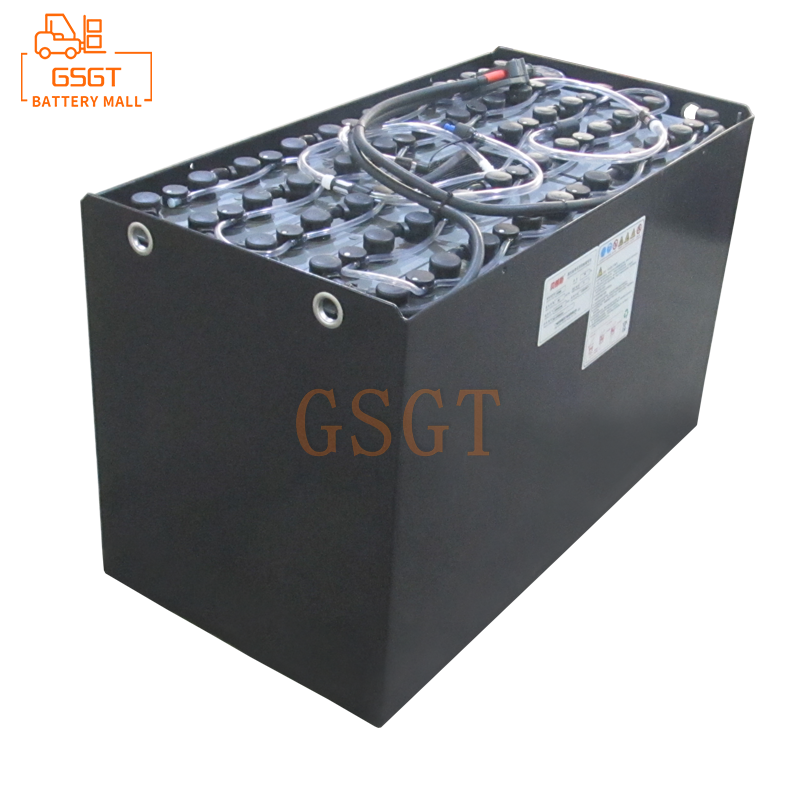Time:2025-04-30 10:46:15
Browse:631
Introduction
In modern logistics and industrial production, forklifts, as key material handling equipment, the performance of their power systems directly affects operational efficiency and operating costs. Lead-acid batteries have long held a dominant position in the forklift power field due to their advantages such as low cost, mature technology and high safety. Although new power technologies such as lithium-ion batteries and hydrogen fuel cells have developed rapidly in recent years, lead-acid batteries still demonstrate strong vitality in the forklift market through continuous technological innovation and performance improvement. This article will delve deeply into the technological development history, current situation and future trends of lead-acid batteries in the forklift field.
The traditional technical limitations of lead-acid batteries
Limitations of traditional technology
Low energy density: The energy density of lead-acid batteries is relatively low. This means that to meet the certain range and power requirements of forklifts, larger and heavier battery packs need to be equipped, which increases the overall self-weight of the forklift, reduces its payload capacity, and also limits the flexible operation of the forklift in narrow Spaces.
Slow charging and discharging speed: The charging speed of traditional lead-acid batteries is relatively slow. It often takes several hours to fully charge them. In the continuous operation scenario of forklifts, this will lead to a longer downtime for charging, reducing operational efficiency. Its discharge rate is also limited, and its performance is poor when dealing with the sudden large current demand of forklifts (such as rapid lifting of heavy objects).
Limited service life: Under normal circumstances, the charge and discharge cycle life of lead-acid batteries is about 1,500 times. Frequent charge and discharge cycles can lead to problems such as sulfation of the plates and shedding of active materials, shortening the battery's service life and increasing the cost of battery replacement and maintenance workload.
High maintenance requirements: It is necessary to regularly check the electrolyte level and replenish distilled water to ensure the normal chemical reactions inside the battery. At the same time, maintenance operations such as equalization charging are also required to prevent voltage imbalance among individual cells in the battery pack. The maintenance work is rather complicated and requires professional knowledge and skills.
Technological breakthroughs and innovations in lead-acid batteries in the forklift field
Optimization of electrode materials and structures
High porosity electrode: By optimizing the electrode manufacturing process and increasing the electrode porosity, the contact area between the electrode and the electrolyte can be significantly expanded, promoting the progress of electrochemical reactions. For instance, by adopting the new type of lead foam electrode material, its unique three-dimensional network structure significantly increases the specific surface area of the electrode, which can effectively enhance the charging and discharging efficiency and capacity of the battery, enabling the forklift to operate for a longer time under the same amount of electricity.
Application of nanomaterials: Researchers are attempting to introduce nanotechnology into the preparation of electrode materials. For instance, nano-lead dioxide cathode materials, due to their higher activity and specific surface area, can significantly improve the charging and discharging performance of batteries, increase the power density of batteries, and make forklifts more powerful in acceleration, climbing and other working conditions.
Lead-carbon battery: An appropriate amount of carbon material is added to the negative electrode to form a lead-carbon composite electrode. The excellent electrical conductivity and adsorption of carbon materials can effectively suppress the sulfation of the negative electrode, extend the battery's cycle life, and simultaneously enhance the battery's high-rate charging and discharging performance, giving forklifts an advantage when dealing with heavy-load operations.
Electrolyte improvement
New electrolyte additives: A variety of electrolyte additives have been developed, such as stannous sulfate and boric acid. These additives can improve the reactivity of the electrode surface during battery charging and discharging, inhibit the occurrence of side reactions, enhance the battery's cycle stability and charge acceptance capacity, reduce charging time, and extend the battery's service life.
Gel electrolyte: Some lead-acid batteries use gel electrolyte to replace traditional liquid electrolyte. Gel electrolyte has the characteristics of being less prone to leakage and having low evaporation. It can effectively enhance the safety and sealing performance of batteries, reduce maintenance requirements, and to a certain extent, improve the low-temperature performance of batteries, thereby expanding the operating temperature range of forklifts.
Innovation in battery structure and manufacturing process
Sealed maintenance-free structure: By adopting advanced sealing technology and gas recombination principles, it realizes the circulation and recombination of oxygen and hydrogen inside the battery, reducing the evaporation and leakage of water in the electrolyte. This maintenance-free lead-acid battery significantly reduces maintenance workload and enhances usage safety, making it one of the mainstream products of lead-acid batteries for forklifts at present.
Wound battery structure: The positive and negative plates and the separator are wound into cylindrical shapes. Compared with the traditional flat plate structure, the wound structure has a higher energy density and better high-current discharge performance, which can meet the power requirements of forklifts under harsh working conditions such as frequent start-stop and heavy-load handling. At the same time, it can also reduce the volume and weight of the battery.
Automated manufacturing process: By leveraging advanced automated production equipment and high-precision manufacturing techniques, the consistency and quality stability of the battery production process are enhanced. From plate coating, curing, assembly to the final inspection, the full-process automated control can effectively reduce the impact of human factors on battery performance, enabling each battery to achieve more stable and reliable performance indicators.
Development of fast charging technology
High-rate charging technology: By improving the internal structure and materials of the battery, lead-acid batteries that can accept high-rate charging have been developed. During the intervals of forklift operation, using high-rate charging equipment to quickly recharge the battery can significantly improve the operational efficiency of forklifts and reduce downtime.
Intelligent charging management system: The accompanying intelligent charging management system can dynamically adjust the charging strategy based on the real-time status of the battery (such as voltage, current, temperature and other parameters), achieving multi-stage precise charging such as constant current, constant voltage and trickle current. It can not only improve the charging efficiency, but also effectively protect the battery, prevent damage to the battery caused by overcharging, undercharging and other situations, and extend the battery's service life.
Application advantages brought about by technological development
Improve the operational efficiency of forklifts
Reduce charging time: The application of fast charging technology enables forklifts to replenish a large amount of power in a short time, reducing the downtime caused by charging and allowing forklifts to operate continuously and efficiently in multiple shifts. For instance, in some logistics warehouses, forklifts equipped with fast-charging lead-acid batteries can be quickly charged during lunch breaks or short breaks and resume operations in the afternoon, effectively increasing the daily workload.
Enhanced power performance: Optimized electrode materials and structures, improved electrolyte and other technologies have increased the battery's power density and discharge performance. Forklifts have stronger power and higher running speed when handling heavy objects, climbing slopes, accelerating and other operations, and can complete material handling tasks more efficiently, improving overall operation efficiency.
Reduce operating costs
Extending battery life: Through material innovation, structural optimization and advanced manufacturing processes, the cycle life of lead-acid batteries has been significantly prolonged. The battery replacement frequency has been reduced from the traditional several hundred cycles to 1,000 cycles or even higher, lowering the battery procurement cost during long-term operation.
Reduce maintenance costs: The popularity of maintenance-free lead-acid batteries has significantly reduced the maintenance workload of forklift batteries. There is no need to frequently check the electrolyte level, add distilled water or perform complex equalization charging operations, which reduces the cost of manual maintenance and also decreases the risk of battery failure caused by improper maintenance.
Enhance safety and environmental protection
Enhanced safety: The application of sealed structures and gas recombination technology effectively prevents electrolyte leakage and the escape of hydrogen and oxygen, reducing safety hazards such as fire and explosion. Meanwhile, the adoption of technologies such as gel electrolyte has further enhanced the safety of batteries, making forklifts safer and more reliable when operating in crowded places like indoors and warehouses.
Improvement in environmental performance: On the one hand, the recycling and utilization technology of lead-acid batteries is constantly maturing. Through advanced recycling processes, substances such as lead and sulfuric acid in used batteries can be efficiently separated and purified, achieving the recycling of resources and reducing environmental pollution. On the other hand, the technologically improved lead-acid batteries have reduced the evaporation of the electrolyte and the emission of harmful gases during use, making them more environmentally friendly.
The current application status and market prospects of lead-acid batteries in the forklift field
Application status
At present, lead-acid batteries still hold a significant market share in the forklift sector, especially in the mid-to-low-end forklift market and cost-sensitive application scenarios, where they have irreplaceable advantages. Forklifts powered by lead-acid batteries can be seen everywhere in logistics warehouses, manufacturing plants, ports and docks, etc. Meanwhile, with the continuous advancement of technology, new lead-acid batteries have gradually emerged in the high-end forklift market, competing with other power sources such as lithium-ion batteries.
Market prospect
Despite the challenges posed by new battery technologies, lead-acid batteries will still maintain an important position in the forklift power field for some time to come, thanks to their constantly innovative technologies, relatively low costs and complete industrial chains. With the continuous development of the global logistics industry and the growth in demand for material handling equipment, the scale of lead-acid batteries in the forklift market is expected to further expand. Meanwhile, through the coordinated development with supporting industries such as the construction of fast charging facilities and intelligent battery management systems, lead-acid batteries will provide forklift users with more efficient, convenient and economical power solutions.
Conclusion and Prospect
After a long period of technological development in the forklift field, lead-acid batteries have achieved remarkable breakthroughs and innovations in electrode materials, electrolytes, battery structures, charging technologies, etc. They have effectively overcome many limitations of traditional technologies and played an important role in improving forklift operation efficiency, reducing operating costs, enhancing safety and environmental protection. Although new battery technologies such as lithium-ion batteries have developed rapidly, lead-acid batteries still have broad application prospects in the forklift power market due to their own advantages and continuous innovation capabilities. In the future, lead-acid battery technology is expected to continue to make progress in the following aspects: First, further enhance energy density, reduce battery volume and weight, and increase the effective load capacity of forklifts; Second, conduct in-depth research on new materials and processes to further extend the battery cycle life and reduce usage costs; Third, enhance integration with technologies such as smart grids and the Internet of Things to achieve intelligent management and remote monitoring of batteries, providing forklift users with more intelligent and personalized services. Through continuous technological innovation and application expansion, lead-acid batteries will continue to radiate new vitality in the forklift field, providing reliable power support for the development of global logistics and industrial production.

$2450

$3405

$4045

$3050

MESSAGE
Professional And Efficient
Security
Affordable Price
Professional Services